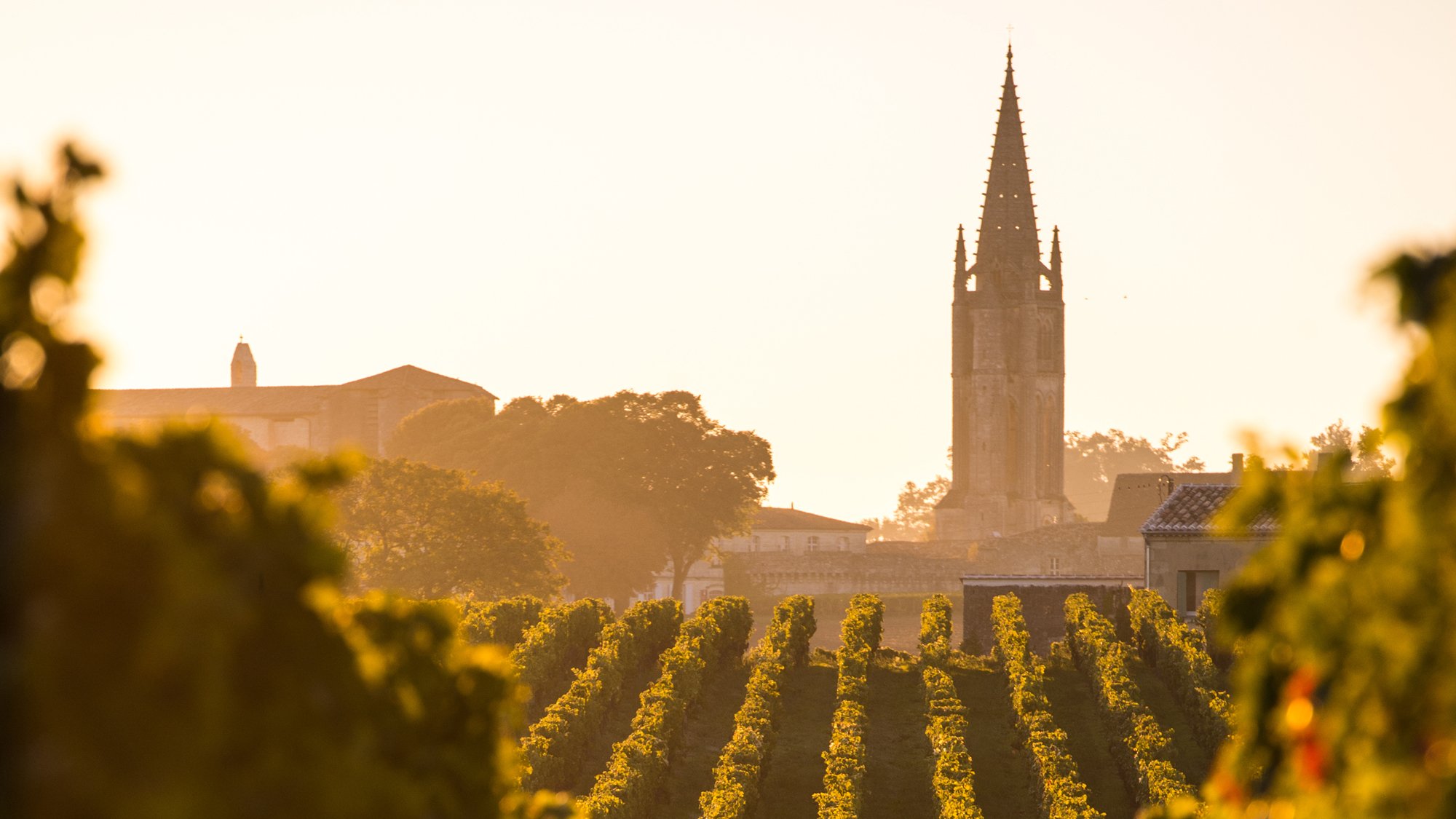▻ The New Saint-Emilion Classification
In conversation with Jane Anson
Episode Summary:-
On September 8th 2022, the new Saint-Emilion classification was announced. Jane Anson talks to Sarah Kemp about the classification, which is revised every ten years and which in the past has been mired in controversy and lawsuits, with several of its most high-profile members withdrawing. Despite this, Jane reports that there was a sense of excitement amongst the châteaux and trade before the 2022 classification was announced.
““The way the Bordeaux system works, how do you make sense of things? You slap a classification on it, a way to give consumers a shortcut to understanding what’s worth paying more for.” ”
Jane begins by discussing the criteria on which the classification is based. In 2022, 50% of the marks were awarded for tasting, but none of the judges were named. For the blind tasting, the candidates for Grands Cru Classé submitted ten vintages, 2010 to 2019, and the candidates for Premier Grands Crus Classé submitted 15 vintages, 2005 to 2019; they had to score, respectively, an average of 14 points out of 20 or 16 points out of 20. For Grands Cru Classé, the rest of the marks were divided into 20% national and international reputation, 20% terroir and 10% winemaking and viticultural techniques. For Premier Grands Crus Classé 35% national and international reputation, 10% terroir and 5% winemaking and viticultural techniques.
In addition, Jane notes, all Premier Grands Crus Classé wines have to have been awarded Grands Crus Classé status before they are elevated. There is no extra level to become a Premier Grands Crus Classé A, it is at the discretion of the jury. The INAO, the appellation board, oversees the classification and no one from the Bordeaux region is involved. “I would say that this year they seem to have done a good job of playing it extremely safe,” Jane says, as she reveals that the châteaux were warned in advance whether there were any queries or they were going to be declassified, so they had the opportunity to drop out.
So who are the winners and losers? The big winner is Château Figeac, who after decades of trying has been promoted to Premier Grands Crus Classé A, where it joins Château Pavie, which was promoted in 2012. This is the most controversial tier, with Châteaux Cheval Blanc, Ausone and Angelus all withdrawing from the classification. There had been an expectation that both Château Canon and Château Troplong-Mondot might be promoted to Premier Grands Crus Classé A. “Canon has had a meteoric rise over the last decade, but does it need another 10 years in the Commission’s eyes to really batten down the hatches of being one of the greatest wines of Saint Emilion?” asks Jane.
There has not been a single demotion, but several new names have been promoted to Grands Crus Classé, including Clos Dubrueil, which Jane is impressed by, as well as Château Lassegue, run by Pierre Seillan. The one missing high-profile estate is Jonathan Maltus’s Le Dôme, which was one of the leaders of the garagiste movement. Jane talks about the reasons why it might have been excluded, and expects that it will be promoted in the next classification. Sarah is keen to know whether the classification still has relevance. Jane believes that the classification allows a way to differentiate between the 700 estates, which are on diverse soils. “More people applied for it than 2012, despite the lawsuits, it shows that the châteaux still certainly believe there is an impact. Do we as consumers? Far less than we would have done 20 years ago, no question about that and with the best will in the world Cheval Blanc and Ausone leaving does diminish the prestige of being a Premier Grands Crus Classé A, but that doesn’t mean there isn’t a value to it.” Jane points out that demand for Figeac, along with its price, has risen since the announcement. Mainly the price has been factored already in if you are a Grands Crus Classé or Premier Grands Crus Classé. Jane concludes “It’s a signpost for consumers in a big, complicated appellation.”
Jane Anson writes:
Château Figeac, long believed to have been unfairly overlooked in the last ranking of 2012, has been promoted to the top of the ranking, where it takes its place alongside Château Pavie, promoted to Premier Grand Cru Classé A in 2012.
Other rumoured promotions, such as Château Canon and Château Troplong Mondot, have not occurred, and in fact, the Figeac elevation is the only change within the entire Premier Grand Cru Classé category, except for the withdrawal of La Gaffelière from the ‘B’ ranking, along with three of the previous four ‘A’s (Angelus, Cheval and Ausone, as mentioned above).
With this 2022 edition, there are now 14 Premier Grand Cru Classés, with two at Premier Grand Cru Classé A status, and 71 Grand Cru Classés. The last ranking, in 2012, had 18 Premier Grand Cru Classés, with four at ‘A’ status, and 64 Grand Cru Classés.
In the Grand Cru Classé section, there are plenty of changes, and a few notable omissions. New entrants include Benoit Trocard’s Clos Dubreuil, Peter Kwok’s Château Tour Saint Christophe, Château Lassegue, Château Tour Baladoz, Château Rol Valentin, Château Mangot, Château Le Croizille, Château La Confession, Château Boutisse, Château Croix de Labrie, the tiny Clos Saint-Julien, Clos Badon-Thunevin, Château Montlisse, Château Badette and Château Montlabert. One estate that was demoted in 2012, Château Corbin Michotte, has been reinstated.
A few missing names are due to estates merging, as is often the case at the time of the new ranking. So Château Pavie-Decesse will now be included within Château Pavie (the two vineyards touch, but it’s a real shame in my personal opinion, as it was always my favourite of the Pavie range), and Château les Grandes Murailles will be included within Clos Fourtet going forward – again a contiguous vineyard. Châteaux L’Arrosée and Grand Pontet, both classified last time around, are now part of Château Quintus. Château la Clotte has withdrawn, along with its sibling estate Château Ausone, as has Quinault L’Enclos along with Château Cheval Blanc. Clos la Madeleine is not on the list either – I assume because it will now be counted within Belair-Monange, or at some point soon. Another missing name is Faurie de Souchard, owned by Château Dassault, so again the likelihood is that the vines will be counted within that of its sibling.
Running Order:-
-
0.00 – 8.54
“I must say that this year they seem to have done a good job of playing it extremely safe.” – Jane Anson
– The history of the classification and the controversies surrounding it.
– The criteria used to assess the estates.
– The INAO’s role and the choice of judges. -
8.55 – 17.00
“I think it would have been a shock if Figeac hadn’t been promoted, frankly.” – Sarah Kemp
– The winners and losers in the new classification.
– Château Figeac’s promotion.
– Discussion of why Châteaux Canon and Troplong Mondot missed out on promotion.
– The new estates promoted to Grands Crus Classé.
– Discussion on why Le Dôme was not promoted. -
17.01 – 23.17
“It’s a signpost for consumers in a big, complicated appellation.” – Jane Anson
– How relevant is the classification to consumers?
– Price of Saint Emilion land versus Pauillac.
– The effect of classification on price and demand.
RELATED POSTS
Keep up with our adventures in wine








The verdict is in! Listen in to our final podcast on En Primeur 2024, where after three weeks of tasting Jane Anson delivers her verdict on the vintage.